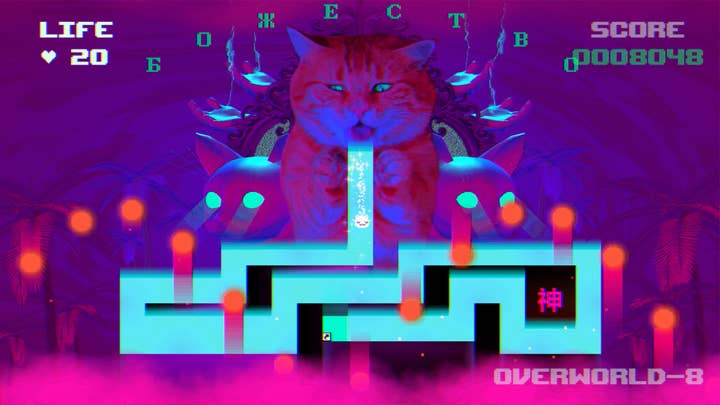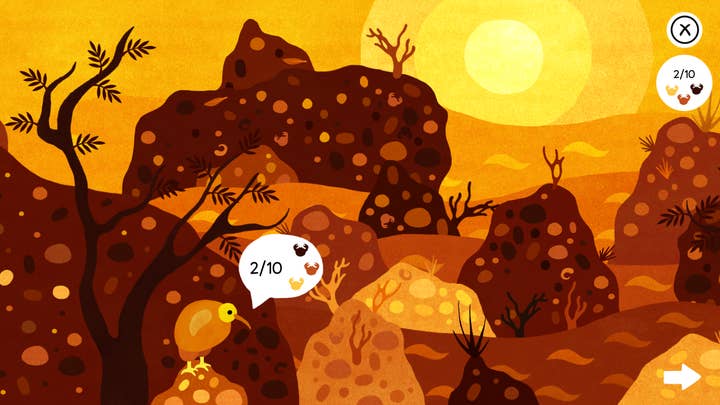The dark, ironic, surreal games of Central and Eastern Europe
The region's developers have found a place in the market by taking the upheaval of the past, and creating a unique visual and thematic identity
It was the after party of inaugural Central & Eastern European Games Awards (CEEGA), which took place in Poznan earlier this month. After a few disco and pop tunes, hundreds of games devs went wild as Nirvana's 'Smells Like Teen Spirit' blasted through the speakers. A lot of people in the room grew up during the 90s; a time of poverty and hopelessness for the region, this was their anthem.
Many channelled that feeling of disparity into escapism, sat in front of the computer. It produced a generation of IT-literate, ambitious and creative people who are establishing Central and Eastern Europe as a development culture with a unique, often very dark visual and stylistic tradition, which is beginning to make waves across the global video games industry.
"For so long we were poor and ashamed of who we are, confused in our identities as new states"
11 bit Studios
"After the success of This War Of Mine, which was based on the 1992 to 1996 Siege of Sarajevo during the Bosnian War, we felt encouraged that the stories from our region matter," said Pawel Miechowski from 11 bit Studios, the Polish developer that picked up three awards for the steampunk city-builder Frostpunk, including Best Game. "We have continued the inspirations from traditional Polish noir cinema and authors like Jacek Dukaj in Frostpunk."
Where the games industry in Central and Eastern Europe was once insecure, trying to imitate standard tropes to gain recognition, the region's creators are showing greater confidence in creating their own aesthetic. They are telling stories related to how they grew up, and in doing so, finding a place in the market.
And what a bounty of stories. Kingdom Come: Deliverance, from the Czech developer Warhorse Studios, provides a detailed portrait of the 15th century Kingdom of Bohemia. CD Red Project's The Witcher borrows heavily from Slavic mythology. 11 bit Studios and the creators of Attentat 1942 offer emotional portraits of the toll 20th century wars have taken in the region

"Everyone knows about the Knights of the Round Table or the Lochness monster, because these cultural tropes have been around for a while now," said 11 bit Studios' Pawel Szyska. "We're only scratching the surface here with the subjects that we can introduce from our region, that will soon enter the cultural discourse."
Pawel Miechowski added: "For so long we were poor and ashamed of who we are, confused in our identities as new states. With economic stability, we can now reflect and create new meanings from those histories."
"Surviving in the 90s was a struggle, and my game is a tribute to that. It's like Binding of Isaac, but an ode to Eastern Europe"
Ivan Zasiadvovk
Dendy and Subor pirate consoles, 90s rave culture, kitsch, grandma papering the wall with carpet, Slav tracksuits, Orthodox religion; all served as inspirations for the now viral puzzle game PUSS!, another of the nominees at the Central & Eastern European Games Awards. The game's Ukrainian creator Ivan Zasiadvovk is fascinated with giving old symbols new life.
"You now see all these artefacts that we grew up with being rehashed in new mediums - vaporware, web-punk, Balenciaga fashion trends," he said. "It was our life, though. Surviving in the 90s was a struggle, and my game is a tribute to that. It's like Binding of Isaac or Pony Island, but an ode to Eastern Europe."
If one wishes to find a more child-friendly, but no less intelligent, game from Central and Eastern Europe, look no further than Chuchel from the Czech developer Amanita Design - a surreal puzzle-game in which a ball of dark hair (obviously) chases its beloved cherry. Gloomy stories by authors like Bratislav Pojar and Zdenek Miller, and other traditional fairy-tales from the region, are all given a 21st century treatment here. As a result, Amanita Designs carves out a space in the over-saturated indie games market.
"Our games borrow heavily from traditional Soviet animation," said Lukas Kunce, one of the creators of Chuchel. "Those visuals are so under-explored, and it's such a well of great plots and non-traditional monsters."

Under Leaves, another nominee of CEEGA orientated towards younger audiences, was also inspired by the environment familiar to its creator, Michal Berlinger.
"Everyone in Czech Republic has a cottage - a relic of the Soviet Union," Berlinger said. "In the communist era no one was able to travel abroad, so people would spend their holidays in a small cottage outside the city. My partner and I looked no further than this cosy nostalgia to create our game.
"Even something as seemingly neutral as nature has different aesthetic and historical points of connection"
Michal Berlinger
"Even something as seemingly neutral as nature has different aesthetic and historical points of connection. The Iron Curtain prevented Western films and animations from being shown in the Communist Bloc, so we grew up not having many other points of reference."
The trauma of the Soviet era certainly made an impact on how these countries create art. Morbidity, cynicism, sarcasm, self-reflection, irony, the macabre, the surreal; these themes are being explored in the games from this post-communist generation. However, with many of these countries now part of the European Union, is it possible that this originality will disappear, each state losing its traditions to homogeneity?
Vit Šisler, creator of Attentat 1942, which won the Hidden Gem category at CEEGA, believes the topics raised in his game are still relevant today: "Attentat 1942 is the first game in a series that will ultimately cover key events of the second half of the 20th century, including the post-war arrangement of Czechoslovakia, the expulsion of Sudeten Germans, the rise of communism to power, and the Prague Spring."

"Many of our development team members were born in the communist era and have direct experience of living under authoritarian regime. The game's creation was influenced by our collective situation; you do not develop games in a vacuum. The topics discussed in our games still resonate in today's culture, society, and politics."
Ivan Zasiadvovk also stated his confidence that the aesthetic identity of the region will persist: "I certainly don't fear that our aesthetics will disappear. In Ukraine, we had a violent revolution in 2014 that impacted our society, our culture. Out of that rubble new aesthetics have arisen. New comic books and video games have come out of that. Things like this will continue the visual evolution of Central and Eastern European games... History never ends."
The existence of an awards event dedicated to Central and Eastern European games suggests that the region's industry is confident in a prosperous future. Rather than trying to imitate other successful markets, it has found its own identity, voice and aesthetic. Indeed, in the post-Brexit political climate, it is heartening to see games at the forefront of portraying these countries as very different, culturally rich places with so much to offer.
The line between celebration of region identity and nationalism can be very thin, however, and the developers interviewed for this article all understood that, in order to gain universal appeal, one cannot just fetishise a certain mythology. Rather, it must be presented it to the world in a way that celebrates its uniqueness, but makes it approachable.
"In PUSS!, throughout the game the player realises that the plot is not about this silly, cute cat - it's about the player themselves," said Ivan Zasiadvovk. "Of course we want to encourage an interaction with a culture and finding of something relevant to their own situation, but no matter what the visual tropes are, the human condition is universal everywhere."